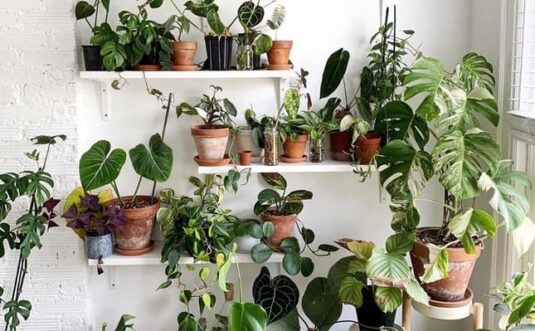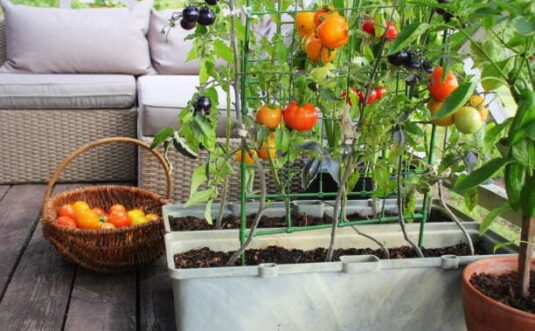Gardening at home is not just about planting seeds and watering plants. It’s also about having the right tools that make the job easier, faster, and more practical. Whether you grow herbs on your windowsill or vegetables in your backyard, the tools you choose can shape your results. People spend time on many hobbies—from checking updates on casinos not on GamStop to maintaining their balcony garden—but the joy of gardening is often in the simple tools you use every day.
Hand Trowel: Your Basic Digging Friend
The hand trowel is one of the most common tools in gardening. It’s small and easy to carry, and it’s used for digging small holes, removing weeds, and moving soil or compost. When planting flowers or vegetables, you’ll often need a hand trowel to scoop soil and place your seeds or seedlings properly.
Most hand trowels have a strong metal blade and a wooden or plastic handle. Choose one that feels comfortable in your hand and doesn’t bend easily when pushed into the soil. It’s a tool you will use often, so having a sturdy one can save you time and reduce effort in daily gardening work.
Pruning Shears: Keep Your Plants in Shape
Pruning shears, sometimes called secateurs, help you trim small branches, cut back overgrown plants, and remove dead leaves or stems. Keeping plants tidy isn’t just about looks—it also helps them grow better and stay healthy.
You can use shears on flower bushes, herbs, or fruit plants. A sharp, clean cut is better for the plant than pulling or breaking a stem. Look for shears with strong blades and a comfortable grip. Some models have a locking feature for safety when you’re not using them.
If you garden regularly, it’s a good idea to wipe down the blades after each use to stop rust and keep the tool working well for longer.
Watering Can: Simple but Essential
Even with all the modern systems available, a watering can is still important in most home gardens. It’s useful when you want to water a few pots or give gentle moisture to young seedlings without strong pressure.
Watering cans come in different sizes and materials, such as plastic or metal. Choose one that holds enough water but is still easy for you to carry. The spout should allow you to pour steadily, and some cans come with a removable rose for spreading water evenly over your plants.
This tool is especially useful for indoor or balcony gardens, where hoses may not reach.
Garden Gloves: Protect Your Hands
Working in the soil can be tough on your hands. Sharp tools, thorns, or even dirt under your nails can cause discomfort or small cuts. A good pair of garden gloves can help protect your skin and keep your hands cleaner.
Choose gloves that fit well and are not too thick. This way, you can still feel what you’re doing while keeping safe. Some gloves are waterproof, which is useful when handling wet soil. Others are made for heavy tasks and have stronger material on the fingers and palms.
Keep your gloves in a dry place so they don’t get moldy between uses. They’re a simple item, but one you’ll be glad to have.
Garden Fork: Loosen and Lift Soil
A hand fork is a small tool with short, pointed metal prongs. It’s perfect for loosening tough soil, mixing compost, or turning over the top layer of dirt before planting. This tool is more useful than a shovel in tight spots or small garden beds.
Forks help air and water move through the soil, which is good for plant roots. They can also be used to pull out larger weeds without breaking them. Look for a fork with strong prongs that don’t bend when pushed into hard ground.
If you’re working in a larger garden, there are long-handled versions too, but the hand fork is better for container gardening or raised beds.
Garden Hoe: Weed Control Made Easier
Weeds can take over your garden quickly. A garden hoe helps you cut them off near the root and loosen the topsoil around plants. This keeps weeds from stealing water and nutrients from your flowers or vegetables.
There are many types of hoes, but for home use, a simple flat-blade hoe works well. You can scrape it just below the surface of the soil to remove weeds without pulling too hard.
Keep the blade clean and sharpen it once in a while for better results. It’s a basic but helpful tool, especially in garden beds or pathways.
Rake: Tidy Up and Spread Soil Evenly
A rake helps you gather leaves, remove debris, and smooth out soil after digging. There are two main types: leaf rakes with soft, flexible tines and soil rakes with strong, short metal teeth.
For gardening, a soil rake is more useful. It helps you level out garden beds, mix in compost, and prepare the ground before planting. It’s also useful for cleaning up when you’re done working.
A light rake is easier to use, but make sure it’s strong enough to handle wet or rocky soil. Some handles are adjustable, which makes it easier to store.
Garden Kneeler: Comfort While You Work
If you often kneel while working in the garden, a garden kneeler can make the task more comfortable. It’s a small cushion or foldable bench that supports your knees and reduces pressure on your legs and back.
Some kneelers come with side handles to help you stand up more easily. Others include pockets for holding tools. They are helpful for older gardeners or anyone who spends a lot of time close to the ground.
It’s not a must-have, but it can help you stay in the garden longer without discomfort, especially during long weeding or planting sessions.
Spray Bottle: For Gentle Hydration or Pest Control
A spray bottle may seem small, but it can serve many purposes. You can use it to mist delicate seedlings, keep indoor plants moist, or apply homemade pest sprays using natural ingredients.
Choose a bottle that lets you adjust the spray level, from fine mist to direct stream. If you use it for different tasks, label the bottle clearly so you don’t mix up contents.
It’s also useful when growing herbs indoors or when applying liquid fertilizer in small amounts.
Tool Storage: Keep Everything in One Place
Finally, having a small box or bag to keep your garden tools in one spot saves you time and stops items from getting lost. Tool bags often have pockets for each item and handles for carrying them around the garden.
Some people use a simple plastic container, while others prefer cloth or canvas organizers. Just make sure it’s waterproof or can dry easily if it gets wet.
When tools are stored together, they last longer and are easier to find when you need them. It’s a simple part of gardening that many overlook, but it keeps your setup clean and efficient.




